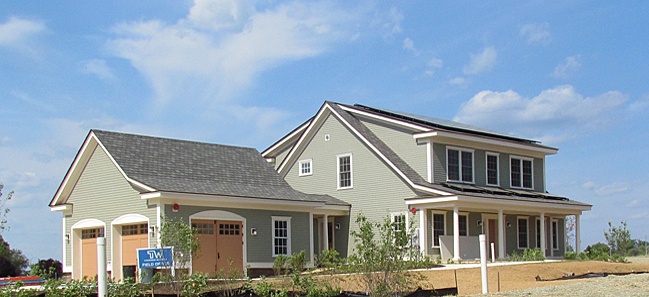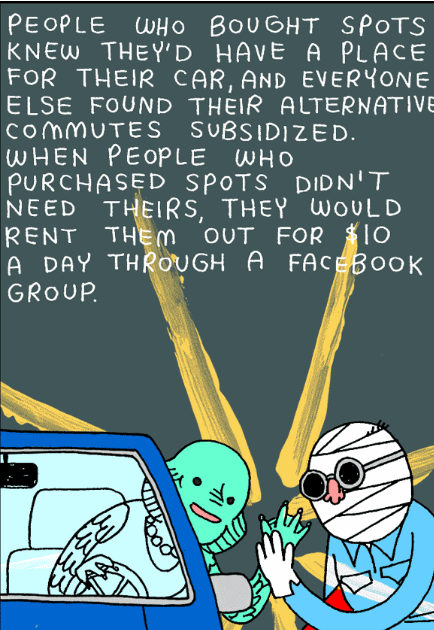What City Observatory did this week
1. How luxury housing becomes affordable. It’s always been the case that developers build new housing for those at the top end of the market. It’s true today, and it was true 50 and 100 years ago. We look back at “luxury” apartments built in Portland in 1910 and in the 1960s to see have they’ve gradually filtered their way down market and are now part of the region’s less expensive housing.
2. Can a net zero house have a three-car garage? We take a close look at the National Institute of Standards and Technology’s Gaithersburg Maryland Net Zero Model home, which, in addition to an array of solar panels, sports three garage doors. What the account for this house leaves out is the substantial energy consumption associated with its suburban location. If a house is located where its occupants need to drive for nearly all daily errands, auto related energy use is going to be much higher than if the same household lived in an apartment in a walkable neighborhood.

3. What a congestion report doesn’t tell us about congestion. We review a new report from Oregon’s Department of Transportation which catalogs increased congestion on Portland area freeways. Surprisingly, congestion has increased on many road segments, even though traffic counts are down. Like other congestion reports, the methodology used greatly exaggerates the time “lost” to congestion: in this case, it treats any time spent traveling at less than sixty miles an hour as time “lost”–even though the speed limit on nearly all Portland area freeways is 55 miles per hour. And importantly, the report concedes that proposed highway widening projects will do little if anything to reduce daily peak hour congestion, except that associated with fender-bender crashes; and even the evidence for that claim is speculative.
4. Dying to widen highways. In part 2 of our review of the recent Oregon Department of Transportation freeway performance report, we call out the “safety-washing” of proposed freeway widening projects. While the report uses the word crash almost 200 times, it omits the salient detail that Portland area freeways are, on average 5 times safer than the region’s arterial streets. Its actually the case that congested freeways, where cars have to slow down, have fewer serious accidents than ones with lower levels of congestion. As with most metro areas, safety won’t be improved by making cars go faster, but by lessening speeds especially where cars conflict with other, more vulnerable road users. Expensive freeway widening projects have little to do with saving lives or reducing serious injuries.
Must read
1. How paying for parking works: Now in easy-to-read comic strip form. You probably haven’t waded through all 900-odd pages of Don Shoup’s magisterial “High Price of Free Parking.” And now you don’t have to: It’s essential lessons have been boiled down to a short comic strip called “The Particular Parable of the Lyft Lot,” published by Bloomberg Business Week. It tells a story–which we related some months back–about how at it’s San Francisco headquarters, the ride-hailing company Lyft implemented a plan to charge employees who parked in on of the firm’s few parking spots and use the proceeds to subsidize trips taken by those who didn’t use parking. The comic strip shows how this worked, and assured parking for those who needed it, and helped underwrite the cost of alternatives for everyone else.

2. In other parking news, The Seattle Times tells us about one weird trick that makes parking pricing work even better: daily rates. The Gates Foundation has nearly 1,200 employees in downtown Seattle. Rather than charging a monthly price for parking, it charges a daily price (that has a monthly maximum). Employees who don’t use the foundation parking lot get a $3 day payment. If you pay monthly, you are paying for parking whether you use it or not; daily payment gives employees the flexibility to car pool, bus or bike when they can, but assures that on days when its more convenient or worthwhile they can park. As with the Lyft experiment in San Francisco, charging daily rates rather than monthly ones has dramatically reduced daily driving by office workers.

